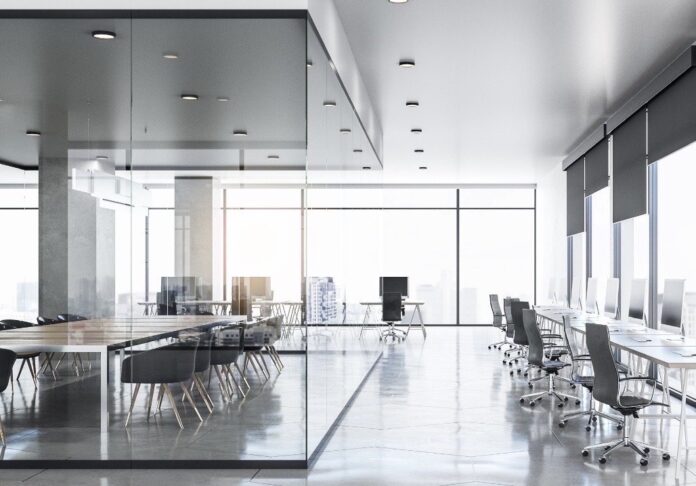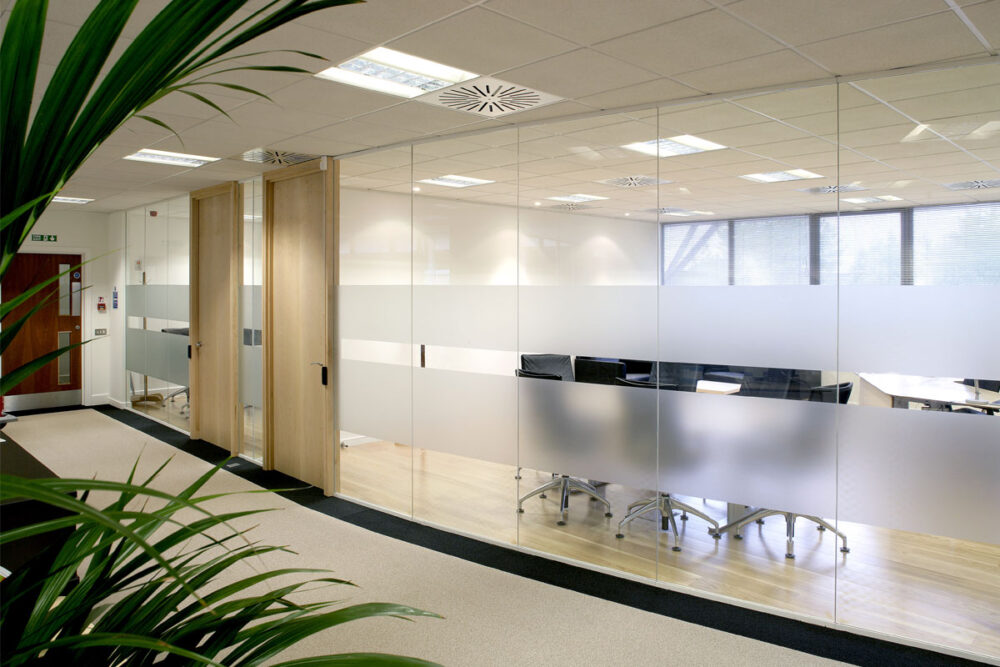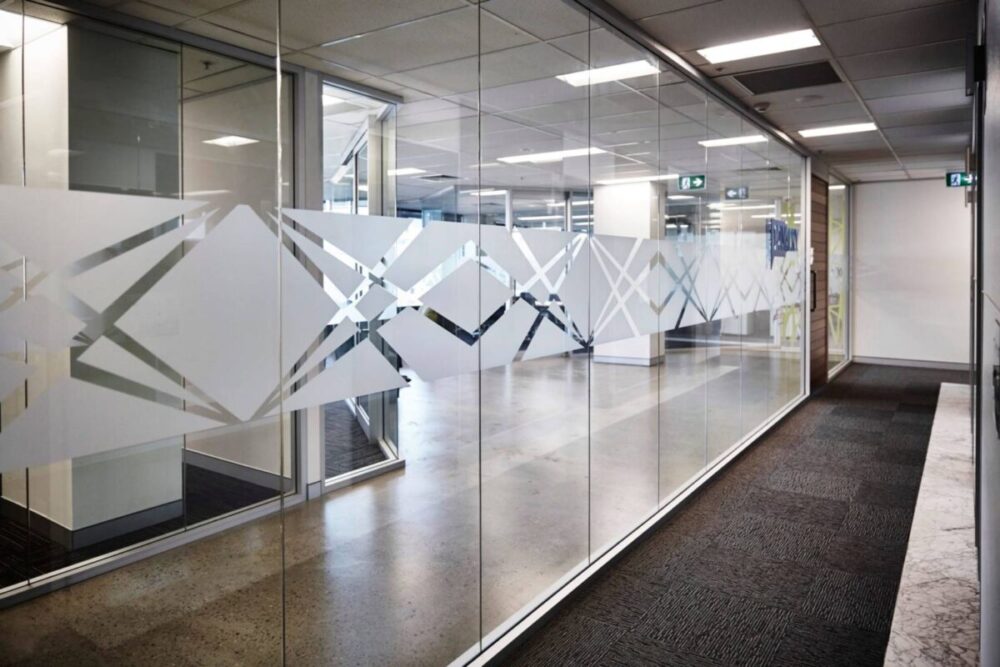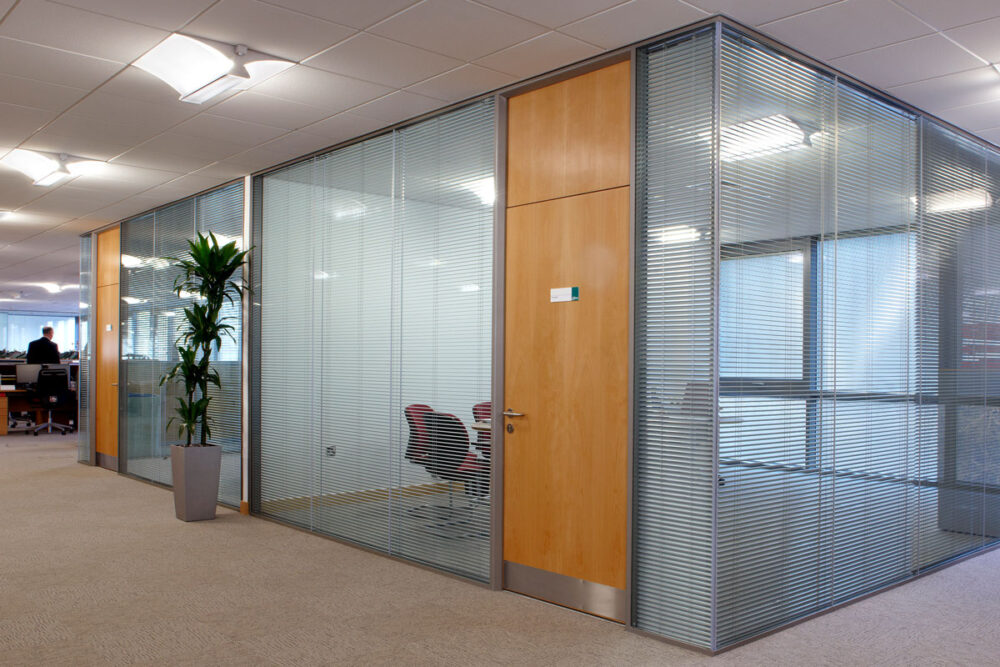
The modern office environment has evolved significantly over the years, with the traditional workspace being replaced by more open, flexible, and collaborative spaces.
One such trend that has gained immense popularity is the use of conference room glass walls to create visually appealing and productive glass conference rooms. This comprehensive guide will discuss the growing trend of glass conference rooms in modern office spaces, the benefits they offer for productivity and aesthetics, the key elements to consider when designing such spaces, and how to transform your office with a glass conference room.
The growing trend of glass conference rooms in modern office spaces
-
The shift towards open and collaborative workspaces
In the past, office spaces were characterized by closed-off cubicles and separate rooms for individuals and teams. However, with the advent of technology and the increasing emphasis on collaboration and communication, the modern office has evolved to become more open and flexible. Glass conference rooms are a perfect example of this shift, with many organizations opting for conference room glass walls to create a sense of openness and transparency.
-
Embracing natural light and views
Another factor driving the popularity of glass conference rooms is the increasing awareness of the benefits of natural light and views in the workplace. Studies have shown that exposure to natural light can boost productivity, enhance mood, and improve overall well-being. By incorporating conference room glass walls, organizations can ensure that their employees have access to natural light and views of the outdoors, which can have a positive impact on their performance and job satisfaction.
-
A reflection of modern design aesthetics
Today’s office spaces are not just about functionality, but also about reflecting the values and culture of the organization. Glass conference rooms embody the modern design aesthetic, characterized by clean lines, minimalism, and the use of natural materials. By choosing to incorporate a glass conference room, organizations can make a strong statement about their commitment to innovation, collaboration, and sustainability.
Benefits of glass conference rooms for productivity and aesthetics

-
Improved communication and collaboration
One of the most significant advantages of conference room glass walls is that they facilitate better communication and collaboration among team members. The transparent nature of glass allows individuals to easily see and connect with their colleagues, leading to increased engagement and interaction. Furthermore, glass conference rooms can be easily reconfigured to accommodate different team sizes and meeting requirements, making them highly versatile spaces.
-
Enhanced productivity through natural light
As mentioned earlier, exposure to natural light can have numerous benefits for employees, including increased productivity. Glass conference rooms, with their large windows and glass walls, allow for ample natural light to filter through, creating a bright and energizing environment. This not only helps to reduce eye strain and fatigue but also promotes a sense of well-being, leading to improved focus and performance.
-
Creating a visually appealing workspace
Aesthetics play a crucial role in influencing the overall atmosphere of an office space, and glass conference rooms can greatly contribute to creating a visually appealing environment. The use of glass helps to create a sense of spaciousness and can make even smaller rooms feel more open and inviting. Additionally, the sleek and modern appearance of glass conference rooms can be a source of pride for employees and leave a lasting impression on clients and visitors.
Key elements to consider when designing glass conference rooms

-
Selecting the right type of glass
When it comes to conference room glass walls, not all glass is created equal. It is important to choose the right type of glass to ensure optimal functionality and aesthetics. Some popular options include tempered glass, which is stronger and more durable than regular glass, and laminated glass, which offers superior sound insulation. Additionally, you may choose to incorporate features such as frosted or tinted glass for added privacy or glare reduction.
-
Acoustic considerations
While glass conference rooms offer numerous benefits, one potential drawback is the issue of sound transmission. It is essential to consider acoustic performance when designing a glass conference room to minimize noise and ensure privacy during meetings. This can be achieved by using double-glazed or acoustic glass, incorporating sound-absorbing materials in the room, and carefully positioning the room within the office layout.
-
Integrating technology
In today’s digital age, technology plays a vital role in the functionality of a conference room. When designing a glass conference room, it is important to consider how technology will be integrated into the space. This may include the installation of audio-visual equipment, such as projectors or screens, as well as wiring and power outlets for laptops and other devices. Additionally, you may want to consider incorporating smart glass technology, which can switch from transparent to opaque at the touch of a button, offering greater flexibility and privacy when needed.
Transforming your office with a glass conference room

-
Assessing your office layout and requirements
The first step in creating a glass conference room is to assess the current layout of your office and determine how the space can be best utilized. Consider factors such as the size of your team, the frequency of meetings, and the need for privacy when making this assessment. It may also be helpful to consult with an interior designer or architect to ensure that the final design will be functional and aesthetically pleasing.
-
Choosing the right materials and finishes
Once you have a clear understanding of your requirements, it is time to select the materials and finishes for your glass conference room. This includes not only the type of glass to be used but also the hardware, such as door handles and hinges, and any additional elements, such as window treatments or decorative features. It is important to choose high-quality materials that are both durable and visually appealing to ensure the longevity and success of your glass conference room.








